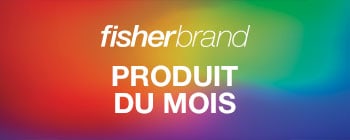Learn More
Invitrogen™ DAPI and Hoechst Nucleic Acid Stains
DAPI and Hoechst are classic popular nuclear counterstains for use in all fluorescent cell and tissue techniques. The blue fluorescence is vivid contrast to green, yellow, orange, red, far red and NIR fluorescent probes and labels.
134.00€ - 338.00€
Spécification
| Couleur | Bleu |
|---|---|
| Méthode de détection | Fluorescence |
| Conditions d’expédition | Température ambiante |
| Type d’étiquette | Fluorescent Dye |
| Code produit | Marque | Quantité | Type de produit | Type de colorant | Prix | Quantité et disponibilité | |||
|---|---|---|---|---|---|---|---|---|---|
| Code produit | Marque | Quantité | Type de produit | Type de colorant | Prix | Quantité et disponibilité | |||
|
10116287
|
Invitrogen™
62248 |
1 ml | DAPI | Imperméant aux cellules |
187.00€
1mL |
Veuillez vous connecter pour pouvoir commander cet article. Besoin d'un compte web? Créer le vôtre dès maintenant! | |||
|
11580246
|
Invitrogen™
D21490 |
10 mg | DAPI | Imperméant aux cellules |
338.00€
10mg |
Veuillez vous connecter pour pouvoir commander cet article. Besoin d'un compte web? Créer le vôtre dès maintenant! | |||
|
11530306
|
Invitrogen™
D3571 |
10 mg | DAPI | Imperméant aux cellules |
215.00€
10mg |
Veuillez vous connecter pour pouvoir commander cet article. Besoin d'un compte web? Créer le vôtre dès maintenant! | |||
|
10184322
|
Invitrogen™
D1306 |
10 mg | DAPI | Imperméant aux cellules |
215.00€
10mg |
Veuillez vous connecter pour pouvoir commander cet article. Besoin d'un compte web? Créer le vôtre dès maintenant! | |||
|
10778843
|
Invitrogen™
H3569 |
10 mL | Coloration d’acide nucléique | Hoechst 33258 |
225.00€
1 pièce |
Veuillez vous connecter pour pouvoir commander cet article. Besoin d'un compte web? Créer le vôtre dès maintenant! | |||
|
11534876
|
Invitrogen™
H1398 |
100 mg | Coloration d’acide nucléique | Hoechst 33258 |
165.00€
100mg |
Veuillez vous connecter pour pouvoir commander cet article. Besoin d'un compte web? Créer le vôtre dès maintenant! | |||
|
11594876
|
Invitrogen™
H21491 |
100 mg | Pentahydrate | Hoechst 33258 |
204.00€
100mg |
Veuillez vous connecter pour pouvoir commander cet article. Besoin d'un compte web? Créer le vôtre dès maintenant! | |||
|
10150888
|
Invitrogen™
62249 |
5 mL | Coloration | Perméant aux cellules |
134.00€
5mL |
Veuillez vous connecter pour pouvoir commander cet article. Besoin d'un compte web? Créer le vôtre dès maintenant! | |||
|
11534886
|
Invitrogen™
H3570 |
10 mL | Coloration d’acide nucléique | Hoechst 33342 |
214.00€
10mL |
Veuillez vous connecter pour pouvoir commander cet article. Besoin d'un compte web? Créer le vôtre dès maintenant! | |||
|
11544876
|
Invitrogen™
H1399 |
100 mg | Coloration d’acide nucléique | Perméant aux cellules |
167.00€
100mg |
Veuillez vous connecter pour pouvoir commander cet article. Besoin d'un compte web? Créer le vôtre dès maintenant! | |||
|
11504886
|
Invitrogen™
H21492 |
100 mg | Coloration | Hoechst 33342 |
206.00€
100mg |
Veuillez vous connecter pour pouvoir commander cet article. Besoin d'un compte web? Créer le vôtre dès maintenant! | |||
Description
DAPI is a fluorescent dye commonly used in molecular biology and cell biology research. DAPI is known for its ability to bind to DNA, specifically to the minor groove of double-stranded DNA. This dye emits blue fluorescence when excited by ultraviolet light, allowing researchers to visualize and stain DNA in various biological samples.
Hoechst dyes are DNA-specific fluorescent stains that bind to the minor groove of double-stranded DNA. They emit blue fluorescence when excited by ultraviolet light. These dyes are widely used for staining DNA in various biological samples.
The FluoroPure™-grade of Hoechst and DAPI powders are manufactured using stringent purification processes to minimize impurities that could interfere with fluorescence imaging. This ensures that the DAPI and Hoechst provides reliable and consistent results with minimal background noise. The >98% purity of FluoroPure grade reagents make them particularly suitable for demanding applications such as super-resolution microscopy and live-cell imaging, where precise and accurate visualization of DNA is essential.
DAPI (4',6-Diamidino-2-Phenylindole):
DAPI 4',6-diamidino-2-phenylindole is a blue fluorescent probe that fluoresces brightly upon selectively binding to the minor groove of double stranded DNA, where its fluorescence is approximately 20-fold greater than in the non-bound state. Its selectivity for DNA and high cell permeability allows efficient staining of nuclei with little background from the cytoplasm and efficient contrasting in IHC staining and spatial transcriptomics and proteomics tissue imaging. DAPI is a classic nuclear counterstain for immunofluorescence microscopy, as well as an important component of high-content screening methods requiring cell-based quantitation of DNA content and segmentation (ex/em 341/452 nm).
DAPI as a dilactate powder is more water soluble than the dihydrochloride salt, and therefore a better choice for preparing stock solutions in water.
To make a 5 mg/mL DAPI stock solution (14.3 mM for the dihydrochloride or 10.9 mM for the dilactate), dissolve the contents of one vial (10 mg) in 2 mL of deionized water (dH2O) or dimethylformamide (DMF). The less water-soluble DAPI dihydrochloride may take some time to completely dissolve in water and sonication may be necessary.
Note: Neither of these DAPI derivatives is very soluble in PBS for Stock Solution.
Dilute the DAPI Stock Solution 1:5000 (or 1:1000 for the 1 mg/mL DAPI 62248) in ultrapure water or PBS (1 μg/mL DAPI). Filter the working solution to remove dye aggregates that can result in punctate signal.
Hoechst 33342, Trihydrochloride, Trihydrate and Hoechst 33258, Pentahydrate (bis-Benzimide):
Our Hoechst dyes are renowned fluorophores widely used for DNA staining in both living and fixed cells. With their exceptional affinity and specificity towards DNA, these dyes serve as excellent targeting agents that can be conjugated to various molecules, allowing them to be tethered to DNA.
The Hoechst dyes typically include Hoechst 33258, Hoechst 33342, and Hoechst 34580. Developed by the German company Hoechst AG in the early 1970s, these bisbenzimide dyes have been widely used for DNA staining ever since.
Excited by UV light, Hoechst dyes emit a broad spectrum of blue light. Upon binding to DNA, their fluorescence increases approximately 30-fold, ensuring a strong signal-to-noise ratio. This fluorescence enhancement is the result of suppressed rotational relaxation and hydration reduction upon DNA binding (ex/em 360/460 nm).
Hoechst dyes are non-intercalating, binding specifically to the minor groove of DNA at A–T-rich regions. This unique binding mechanism allows for precise and reliable DNA staining.
Whether you're working with living or fixed cells, our Hoechst dyes are compatible with immunohistochemistry applications. Additionally, the binding of Hoechst 33342 to DNA induces minimal cytotoxicity, ensuring the viability of your cells.
While all three Hoechst dyes have similar applications, they do possess slight differences in their properties. Hoechst 33342, for example, is significantly more cell-permeable due to the addition of a lipophilic ethyl group, making it the preferred choice for living cell staining. On the other hand, Hoechst 34580, with its dimethylamine group instead of the phenol, exhibits a shifted emission maximum at 490 nm, compared to the 461 nm of Hoechst 33258 and Hoechst 33342.
Hoechst 33258, Pentahydrate is also known as bis-Benzimide.
Application of DAPI and Hoechst Fluorescent Dyes:
- DNA Staining—commonly used for DNA staining in fluorescence microscopy and flow cytometry. It binds to the minor groove of double-stranded DNA and emits blue fluorescence when excited by ultraviolet (UV) light. This allows researchers to visualize and quantify DNA in cells, tissues, and nuclei.
- Cell Cycle Analysis—widely used to analyze the cell cycle. By staining cells with this dye and using flow cytometry or fluorescence microscopy, researchers can identify and quantify different phases of the cell cycle, such as G1, S, and G2/M phases. This analysis provides insights into cell proliferation, cell cycle progression, and cell cycle abnormalities.
- Nuclear Morphology and Chromatin Organization—study nuclear morphology and chromatin organization. By visualizing the DNA within the nucleus, researchers can investigate changes in nuclear size, shape, and chromatin condensation, which are associated with various cellular processes and conditions.
Specifications
| Bleu | |
| Fluorescence | |
| Température ambiante | |
| Fluorescent Dye |
Usage exclusivement réservé à la recherche. Ne pas utiliser pour des procédures de diagnostic.
Your input is important to us. Please complete this form to provide feedback related to the content on this product.










